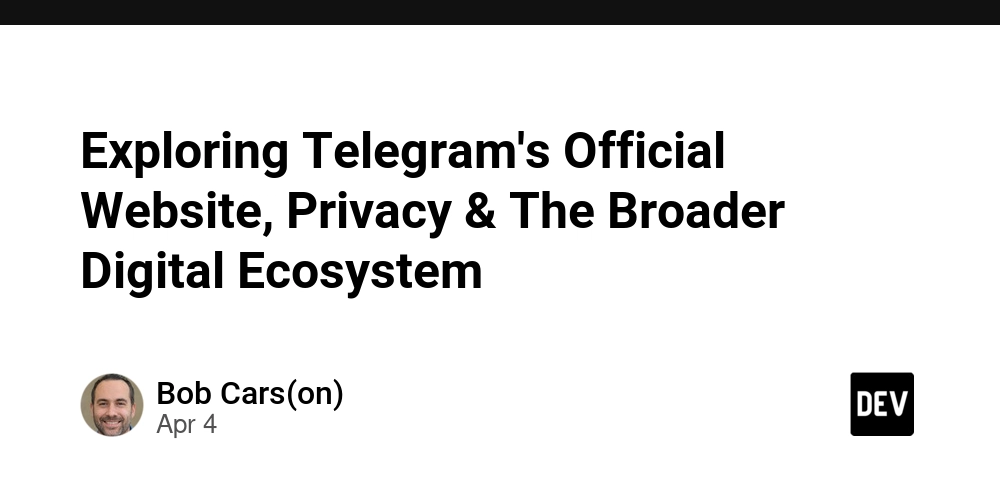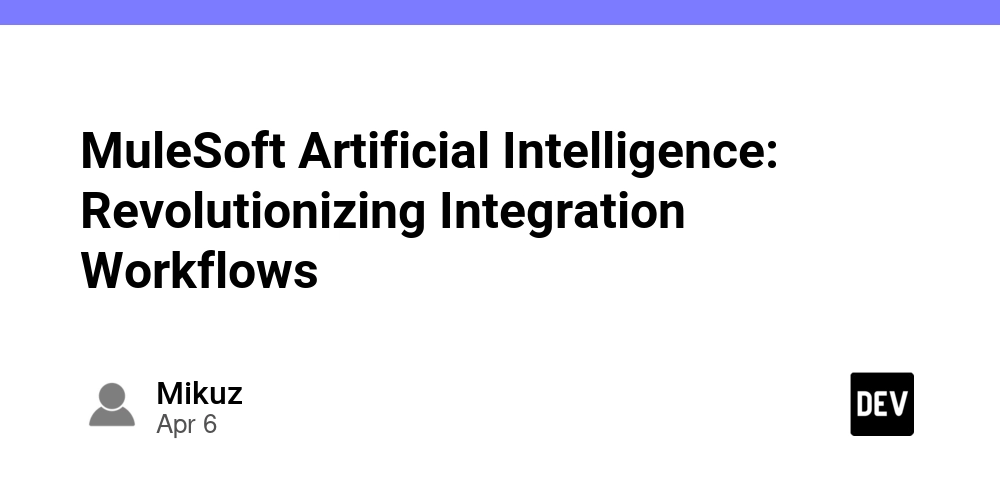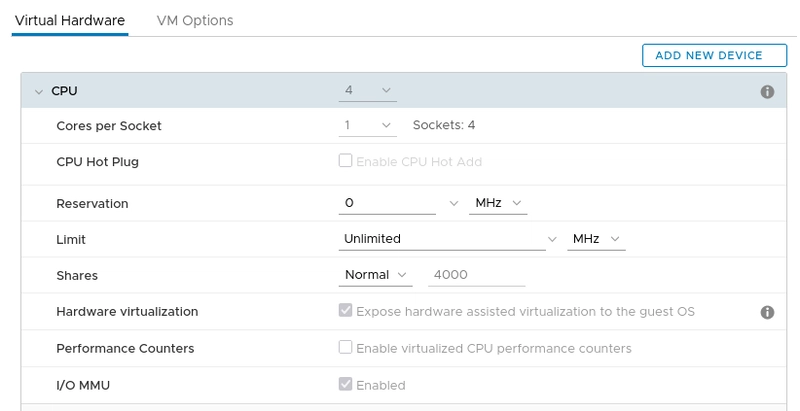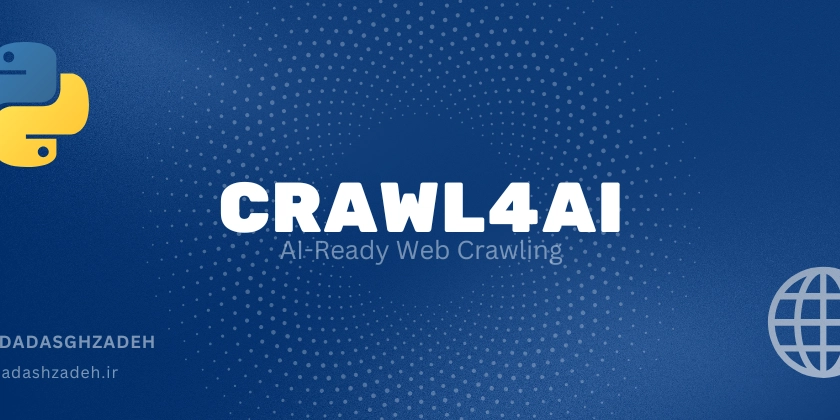Exploring Telegram's Official Website, Privacy & The Broader Digital Ecosystem
Abstract In this post, we explore Telegram’s official website and its privacy framework while connecting it to today’s wider digital communication and blockchain ecosystem. We discuss the evolution of messaging platforms like Telegram, WhatsApp, and Signal, and examine privacy laws such as GDPR and CCPA. In addition to highlighting core features and technical aspects, we also explore related trends such as blockchain, NFT marketing, sustainable blockchain practices, and tokenizing open source licenses. Practical examples, challenges, and a future outlook are provided to help you navigate this evolving digital landscape. Introduction Telegram is known as one of the leading messaging platforms for privacy-centric communication. With a focus on strong encryption and rapid development cycles, Telegram’s Official Website has become a go-to resource for users who value secure messaging. However, its influence goes beyond messaging. Today’s digital world is marked by the convergence of innovative communication tools with emerging technologies like blockchain and NFT marketing. This post delves into Telegram’s privacy framework, what makes it successful, and its place within this broader ecosystem. We will reference key topics such as the European GDPR Information and the CCPA Overview by California Government while also comparing platforms such as WhatsApp's Security and Signal's Privacy Features. In doing so, we aim to help you understand Telegram in the context of modern digital communication technologies and data privacy legislation. Background and Context History and Overview of Telegram Launched in 2013, Telegram was created to offer a fast, secure, and reliable messaging system. Unlike many older platforms, Telegram was designed from the ground up with privacy in mind. Its proprietary encryption methods and cloud-based system differentiate it from services like WhatsApp and Signal. Telegram also offers features such as group chats, channels, and bots, which make it a versatile tool for both personal and professional use. Privacy Laws and Their Impact Privacy regulations such as the European Union’s GDPR and the CCPA in California have significantly influenced how communication platforms operate. These laws mandate transparency and user control over personal data, pushing companies to adopt stronger security protocols. Telegram’s emphasis on encryption and other privacy measures is partly driven by these external pressures. The Ecosystem of Communication Platforms In the broader digital landscape, communication platforms often intersect with revolutionary technologies. For instance: WhatsApp utilizes end-to-end encryption to ensure data integrity. Signal has become a favorite among privacy advocates due to its minimalist, secure design. Blockchain and NFT marketing are emerging trends that are starting to intersect with communication platforms, particularly in decentralized communities. For additional context, you can explore topics like What is Blockchain and What is NFT Marketing. Core Concepts and Features Telegram’s Key Privacy Features Telegram offers a suite of privacy features: End-to-End Encryption: For secret chats, Telegram employs encryption methods that ensure only the communicating users can read the messages. Cloud-Based Messaging: Unlike some other platforms, Telegram’s cloud-based approach allows for seamless synchronization across devices. User Anonymity: The platform supports usernames instead of phone numbers, enabling greater identity protection. These features position Telegram as not just a messaging service but as part of a broader trend towards enhanced privacy in digital communications. Intersection with Blockchain and Tokenization Modern digital technologies are increasingly integrating with blockchain. Related topics include: Tokenizing Open Source Licenses which explores the benefits of applying blockchain technology to the world of software licensing. Sustainable Blockchain Practices focus on eco-friendly approaches in technology. What is Fragment Telegram – which further examines Telegram’s unique intersection with blockchain technology. These integrations provide mechanisms for enhancing user trust, transparency, and even monetization in open source and privacy applications. Table: Comparison of Messaging Platforms’ Privacy Frameworks Feature Telegram WhatsApp Signal Encryption Type Cloud & Secret Chat Encryption End-to-End Encryption End-to-End Encryption Cloud Storage Yes Limited No User Identity Usernames optional Phone-based Phone-based Self-Destruction Options Yes Limited Yes Blockchain Integration Emerging (via projects) Not Present Not Present This table highlights that while Telegram and Signal emphasize advanced security features, Telegram also innovates in areas such as blockchain integration which reinforces open

Abstract
In this post, we explore Telegram’s official website and its privacy framework while connecting it to today’s wider digital communication and blockchain ecosystem. We discuss the evolution of messaging platforms like Telegram, WhatsApp, and Signal, and examine privacy laws such as GDPR and CCPA. In addition to highlighting core features and technical aspects, we also explore related trends such as blockchain, NFT marketing, sustainable blockchain practices, and tokenizing open source licenses. Practical examples, challenges, and a future outlook are provided to help you navigate this evolving digital landscape.
Introduction
Telegram is known as one of the leading messaging platforms for privacy-centric communication. With a focus on strong encryption and rapid development cycles, Telegram’s Official Website has become a go-to resource for users who value secure messaging. However, its influence goes beyond messaging. Today’s digital world is marked by the convergence of innovative communication tools with emerging technologies like blockchain and NFT marketing. This post delves into Telegram’s privacy framework, what makes it successful, and its place within this broader ecosystem.
We will reference key topics such as the European GDPR Information and the CCPA Overview by California Government while also comparing platforms such as WhatsApp's Security and Signal's Privacy Features. In doing so, we aim to help you understand Telegram in the context of modern digital communication technologies and data privacy legislation.
Background and Context
History and Overview of Telegram
Launched in 2013, Telegram was created to offer a fast, secure, and reliable messaging system. Unlike many older platforms, Telegram was designed from the ground up with privacy in mind. Its proprietary encryption methods and cloud-based system differentiate it from services like WhatsApp and Signal. Telegram also offers features such as group chats, channels, and bots, which make it a versatile tool for both personal and professional use.
Privacy Laws and Their Impact
Privacy regulations such as the European Union’s GDPR and the CCPA in California have significantly influenced how communication platforms operate. These laws mandate transparency and user control over personal data, pushing companies to adopt stronger security protocols. Telegram’s emphasis on encryption and other privacy measures is partly driven by these external pressures.
The Ecosystem of Communication Platforms
In the broader digital landscape, communication platforms often intersect with revolutionary technologies. For instance:
- WhatsApp utilizes end-to-end encryption to ensure data integrity.
- Signal has become a favorite among privacy advocates due to its minimalist, secure design.
- Blockchain and NFT marketing are emerging trends that are starting to intersect with communication platforms, particularly in decentralized communities.
For additional context, you can explore topics like What is Blockchain and What is NFT Marketing.
Core Concepts and Features
Telegram’s Key Privacy Features
Telegram offers a suite of privacy features:
- End-to-End Encryption: For secret chats, Telegram employs encryption methods that ensure only the communicating users can read the messages.
- Cloud-Based Messaging: Unlike some other platforms, Telegram’s cloud-based approach allows for seamless synchronization across devices.
- User Anonymity: The platform supports usernames instead of phone numbers, enabling greater identity protection.
These features position Telegram as not just a messaging service but as part of a broader trend towards enhanced privacy in digital communications.
Intersection with Blockchain and Tokenization
Modern digital technologies are increasingly integrating with blockchain. Related topics include:
- Tokenizing Open Source Licenses which explores the benefits of applying blockchain technology to the world of software licensing.
- Sustainable Blockchain Practices focus on eco-friendly approaches in technology.
- What is Fragment Telegram – which further examines Telegram’s unique intersection with blockchain technology.
These integrations provide mechanisms for enhancing user trust, transparency, and even monetization in open source and privacy applications.
Table: Comparison of Messaging Platforms’ Privacy Frameworks
| Feature | Telegram | Signal | |
|---|---|---|---|
| Encryption Type | Cloud & Secret Chat Encryption | End-to-End Encryption | End-to-End Encryption |
| Cloud Storage | Yes | Limited | No |
| User Identity | Usernames optional | Phone-based | Phone-based |
| Self-Destruction Options | Yes | Limited | Yes |
| Blockchain Integration | Emerging (via projects) | Not Present | Not Present |
This table highlights that while Telegram and Signal emphasize advanced security features, Telegram also innovates in areas such as blockchain integration which reinforces open source and digital token practices.
Bullet List: Key Advantages of Telegram
- Enhanced Privacy: Multiple layers of security protect user data.
- Cross-Platform Accessibility: Sync conversations across all devices seamlessly.
- Diverse Feature Set: From group chats to bots, Telegram supports a range of applications.
- Innovative Ecosystem: Integration with blockchain and NFT trends offers emerging opportunities.
- User Empowerment: Options like self-destruct messages give users more control over their data.
Applications and Use Cases
Practical Example 1: Secure Communication
One practical application of Telegram is within communities that require secure and private communication. For instance:
- Activist Groups: Rely on Telegram for confidential messaging while coordinating activities.
- Businesses: Use Telegram’s channels to share sensitive updates without risking data breaches.
- Developers: Many open source communities use Telegram for project collaboration, which can be further integrated with tokenized open source licenses as discussed in Tokenizing Open Source Licenses.
Practical Example 2: Integration with Blockchain Technologies
Blockchain integration offers transformative benefits. For example:
- Decentralized Finance (DeFi): Platforms integrate messaging and transaction systems to ensure secure financial operations.
- NFT Marketplaces: Developers and creators leverage platforms like Telegram to promote NFT projects, a trend closely related to discussions on What is NFT Marketing.
- Digital Identity and Authentication: Blockchain-based messaging can form the backbone of secure digital identity systems.
Practical Example 3: Digital Content and Monetization
Telegram’s robust permission systems and privacy features are used by content creators to share and monetize digital products. For example:
- Subscription Channels: Creators often run premium content channels that require membership fees.
- Open Source Funding: Integration of blockchain practices allows for transparent funding mechanisms, similar to emerging practices in Sustainable Blockchain Practices.
Challenges and Limitations
While Telegram and similar platforms present numerous advantages, they face challenges as well:
Technical Challenges
- Scalability: Handling a large volume of encrypted messages while maintaining performance is a significant technical hurdle.
- Interoperability: Integration with blockchain and other decentralized platforms requires robust API and protocol support.
- Security Risks: Even the most secure systems can have vulnerabilities. Continuous audits and updates are essential to mitigate risks.
Adoption Challenges
- User Awareness: Not all users understand the intricacies of encryption and privacy technology.
- Regulatory Compliance: Adhering to strict privacy regulations such as GDPR and CCPA may restrict certain functionalities.
- Market Competition: Competing against well-established platforms like WhatsApp and Signal forces Telegram to continuously innovate and adapt.
Legal and Ethical Considerations
- Government Regulations: The evolving legal landscape across different countries means that Telegram and similar platforms must constantly adapt their privacy policies.
- Data Sovereignty: With cloud-based solutions, data residency and cross-border data flow are significant concerns that need ongoing attention.
Future Outlook and Innovations
Emerging Trends
The future of digital communication and technology indicates a deepening convergence between messaging platforms and blockchain technology. Some emerging trends include:
- Enhanced Data Sovereignty: Future regulations may demand better localization of data storage.
- Decentralized Identity: Combining blockchain with chat platforms could revolutionize how we validate digital identities.
- Open Source Tokenization: As explored in Tokenizing Open Source Licenses, innovations in blockchain could drive new monetization models.
Innovations on the Horizon
- Interoperable Systems: We may soon see more messaging platforms offering interoperability with blockchain networks, similar to concepts explained in What is Fragment Telegram.
- Privacy by Design: Future updates will likely incorporate even more robust privacy measures, ensuring user data is protected from end-to-end.
- AI Integration: Artificial intelligence could further enhance user experience through smart recommendations, better spam filtering, and advanced threat detection mechanisms.
Insights from the Developer Community
The developer community is actively discussing these trends. For example, recent Dev.to posts such as Exploring Elon Musk's Fascination with NFTs and Influence on Open Source Software and Navigating Open Source Project Sponsorship: A Guide for Success provide valuable insights into evolving funding models and licensing challenges. These discussions bridge technical details with practical strategies for developers and project maintainers.
Structured Data and Analysis
Below is a bullet list and table summarizing the key aspects of Telegram and its related ecosystem:
Bullet Points Summary:
- Telegram’s Privacy: Emphasizes encrypted communication and offers features like self-destruct messages.
- Blockchain Integration: Emergence of decentralized practices is influencing privacy and tokenization.
- Legal Landscape: GDPR and CCPA guide the development of data protection protocols across platforms.
- Future Innovations: Enhanced AI features and decentralized identity systems shape the next era of digital communication.
- Open Source Funding: Tokenizing open source licenses and sustainable blockchain practices support project longevity.
Table: Future Trends and Considerations
| Trend | Description | Impact |
|---|---|---|
| Decentralized Identity | Use of blockchain to manage digital identities | Enhanced security and user control |
| Interoperability | Messaging platforms connecting with blockchain systems | Increased integration and flexibility |
| Tokenized Licensing | Monetizing open source via smart contracts and tokens | New funding models for developers |
| AI-Powered Privacy | Integration of machine learning for real-time threat detection | Proactive data security enhancements |
| Regulatory Evolution | Adapting to global privacy laws and data sovereignty regulations | Continuous innovation in compliance |
Summary
Telegram’s Official Website is more than just a portal for a messaging app. It stands at the confluence of secure communication, evolving privacy regulations, and emerging blockchain innovations. Through robust encryption, innovative features, and potential integration with blockchain practices, Telegram remains a leader among modern communication platforms.
Throughout this post, we have explored:
- The history and evolution of Telegram.
- The privacy frameworks dictated by GDPR and CCPA.
- A comparative look at similar platforms like WhatsApp and Signal.
- The integration of blockchain trends via tokenizing open source licenses and sustainable practices.
- Practical use cases and examples illustrating secure communications and digital monetization.
- The challenges related to scalability, regulatory compliance, and technical vulnerabilities.
- A forward-looking outlook where decentralized identity and AI-powered privacy shape future innovations.
Moreover, the post draws upon additional insights from reputable sources and related topics. For additional reading on blockchain and digital ecosystems, check out discussions on What is Blockchain and What is NFT Marketing.
Final Thoughts
In this new era, where privacy and innovation go hand in hand, platforms like Telegram set the pace. By continuously evolving its features and embracing new technologies—such as blockchain integration and digital tokenization—it remains at the forefront of secure communications. With ongoing debates around privacy, security, and digital rights, Telegram and its peers will undoubtedly continue to influence the trajectory of how we interact, share data, and protect our identities online.
As you plan your next project or evaluate which communication platform to adopt, consider the benefits of robust privacy features, the emerging trend of blockchain tokenization, and the implications of an evolving regulatory framework. Projects like Sustainable Blockchain Practices and discussions on What is Fragment Telegram illustrate how the convergence of communication and digital innovation opens up a world of opportunities for secure, streamlined, and future-proof interactions.
For further insights on supporting open source and on innovative funding models, you can also refer to Dev.to articles like Navigating Open Source Project Sponsorship and Exploring the Vibrant Cool Cats Indie Hacking Community.
In conclusion, whether you are a developer, a digital privacy advocate, or simply someone interested in the next frontier of secure communications, there has never been a better time to explore and engage with platforms that place privacy and innovation at the core of their vision.
Happy exploring, and may your digital journeys be safe and innovative!









































































































































































![[The AI Show Episode 142]: ChatGPT’s New Image Generator, Studio Ghibli Craze and Backlash, Gemini 2.5, OpenAI Academy, 4o Updates, Vibe Marketing & xAI Acquires X](https://www.marketingaiinstitute.com/hubfs/ep%20142%20cover.png)



























































































































![[DEALS] The Premium Learn to Code Certification Bundle (97% off) & Other Deals Up To 98% Off – Offers End Soon!](https://www.javacodegeeks.com/wp-content/uploads/2012/12/jcg-logo.jpg)


![From drop-out to software architect with Jason Lengstorf [Podcast #167]](https://cdn.hashnode.com/res/hashnode/image/upload/v1743796461357/f3d19cd7-e6f5-4d7c-8bfc-eb974bc8da68.png?#)






































































































.png?#)




.jpg?#)
































_Christophe_Coat_Alamy.jpg?#)
 (1).webp?#)









































































































![Rapidus in Talks With Apple as It Accelerates Toward 2nm Chip Production [Report]](https://www.iclarified.com/images/news/96937/96937/96937-640.jpg)






































































































































